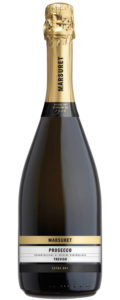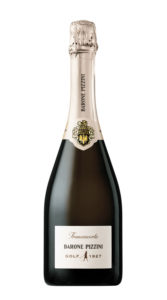Prosecco DOC or DOCG is white wine produced in a large area spanning nine provinces in the Veneto and Friuli Venezia Giulia regions and is named after the village of Prosecco. It is made from the Prosecco grape and is almost always made in sparkling (spumante) or semi-sparkling (frizzante). Within the larger designation are two small DOCG areas, Conegliano Valdobbiadene Prosecco in the hills between the towns of Conegliano and Valdobbiadene and Asolo Prosecco around the nearby town of Asolo. Prosecco Superiore is always spumante and comes only from these areas. The first known mention of the name Prosecco dates back to 1593 and in 2019, Le Colline del Prosecco di Conegliano e Valdobbiadene became a UNESCO World Heritage site, due to the region’s role in its production. For the past 30 years, Prosecco has risen sharply in popularity in markets outside Italy. It uses its secondary fermentation process in large stainless steel tanks rather than in each individual bottle. Most Prosecco variants have intense primary aromas and are meant to taste fresh, light and comparatively simple.
Asti is a sparkling white wine produced throughout southeastern Piedmont, but is particularly focused around the towns of Asti and Alba. Made from the Moscato Bianco grape, it is sweet and low in alcohol and often served with dessert. Like Prosecco, Asti does not use secondary fermentation in a bottle, but retains its sweetness through a complex filtration process. Another wine called Moscato d’Asti is made in the same region from the same grape, but is only slightly sparkling (frizzante) and tends to have even lower alcohol. The first sparkling Asti was produced around 1870 by Carlo Gancia, in the town of Canelli along the Belbo River. After World War II, Asti saw its popularity rise in the United States, as returning soldiers from the war brought their taste for the light, sweet wine home with them.



Franciacorta, Italy’s answer to French Champagne, hails from small towns in Lombardy. Italians would say that Franciacorta is a tiny fazzoletto (napkin) of land in the heart of Lombardy, which embraces the territories of nineteen municipalities in the Brescia province. It is also the area where the finest Italian sparkling wines come from.
“Bubbles” from Franciacorta, as they are referred to by their manufacturers, are produced according to a very restrictive protocol that earned the Consortium’s wines the prestigious DOCG denomination – the quality denomination that the Italian government awards to the specialty products whose original production location is certified and guaranteed.
Franciacorta wines are made using the method of Champagne by allowing the secondary fermentation to take place in the bottle. And like Champagne, the wines of Franciacorta are made from the international varieties of Pinot Nero, Chardonnay and Pinot Bianco. These grapes have been grown in Italy for over two hundred years.





